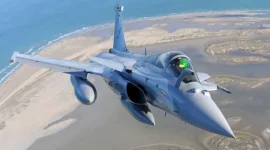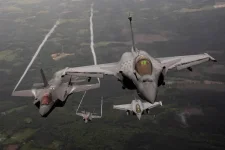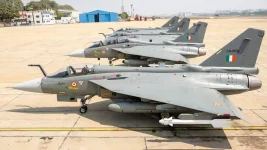- Views: 4K
- Replies: 18

The Indian Air Force (IAF) planning a major shift in its air defence strategy, opting to prioritize the development of an indigenous long-range missile system over local production of the Russian S-400 Triumf.
This decision comes amidst delays in the delivery of the remaining two S-400 squadrons from Russia, attributed to the ongoing conflict in Ukraine and its impact on global defence supply chains.
India's acquisition of five S-400 squadrons from Russia was hailed as a significant boost to its air defence capabilities. The S-400 is renowned as one of the world's most sophisticated systems, capable of intercepting a wide range of aerial threats, including ballistic missiles and fighter jets, at distances of up to 400 kilometers.
While India has received three of the five ordered squadrons, the delivery of the remaining two has been hampered by the ongoing war in Ukraine, which has strained Russia's defence production and supply lines.
IAF officials have confirmed that there are no plans to pursue local manufacturing of the S-400 system. This decision reflects a strategic shift towards greater self-reliance in defence technology. The IAF is now placing its bets on "Project Kusha," an ambitious indigenous program aimed at developing 10 squadrons of advanced long-range interceptor missiles.
Spearheaded by India's DRDO, Project Kusha seeks to create a robust domestic alternative to foreign air defence systems like the S-400. The project is developing three types of long-range interceptor missiles, each designed to counter a variety of aerial threats, ultimately forming the backbone of India's future air defence network. This initiative aligns with India's "Atmanirbhar Bharat" (Self-Reliant India) campaign, which emphasizes indigenous development and production.
The reliance on Russian defence technology has also presented geopolitical challenges for India, including the potential threat of sanctions under the U.S. Countering America's Adversaries Through Sanctions Act (CAATSA). By focusing on Project Kusha, India aims to mitigate such risks in the future.
While specific details about the capabilities of the Project Kusha interceptor missiles remain classified, reports indicate that the three missile systems will be equipped to handle a wide array of threats, including cruise missiles, fighter aircraft, and ballistic missiles. These missiles are expected to feature advanced radar systems, multi-target engagement capabilities, and robust electronic countermeasures to ensure operational effectiveness in modern warfare scenarios.
Project Kusha is progressing steadily, with developmental trials anticipated to commence soon. Once operational, this indigenous system will complement India's existing air defence assets, which include the Akash Surface-to-Air Missile (SAM) system, the MR-SAM, and the recently inducted S-400 systems.

)





